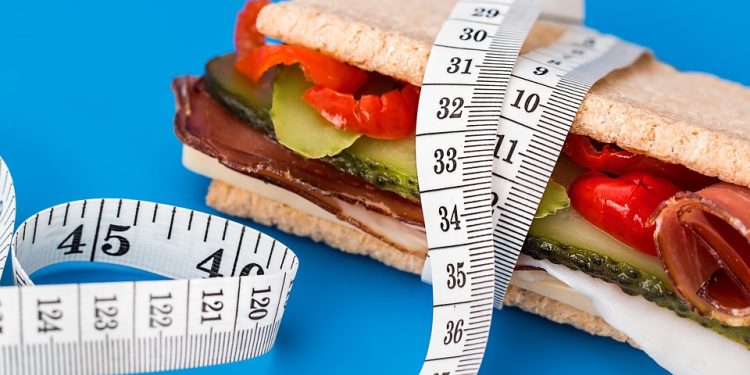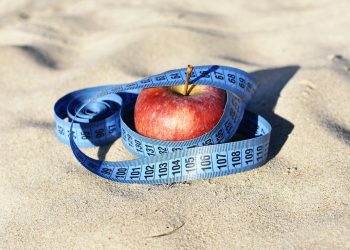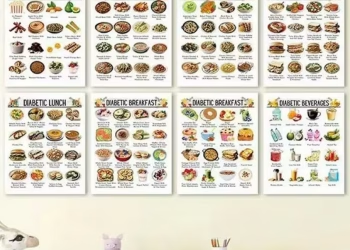Embark on a Sustainable Weight Loss Journey
Are you tired of fad diets and yo-yo weight fluctuations? It’s time to ditch the unsustainable practices and embrace a holistic approach to weight loss. This isn’t about quick fixes; it’s about building healthy habits that will last a lifetime. This article guides you on how to start your sustainable weight loss journey now.
Why Sustainable Weight Loss Matters
Rapid weight loss often relies on extreme calorie restriction or elimination of entire food groups. While you might see results quickly, these methods are rarely sustainable. They can lead to:
- Nutrient deficiencies
- Muscle loss
- Metabolic slowdown
- Increased risk of regaining weight (often more than you lost!)
Sustainable weight loss, on the other hand, focuses on gradual changes that are easy to maintain. It’s about finding a balance that works for you, incorporating healthy habits into your daily routine, and listening to your body’s needs. It prioritizes long-term health and well-being over short-term results.
Step 1: Set Realistic and Achievable Goals
Instead of aiming for a drastic weight loss number, start with smaller, more manageable goals. For example:
- “I will walk for 30 minutes, 3 times a week.”
- “I will incorporate one serving of vegetables into every meal.”
- “I will drink 8 glasses of water each day.”
Break down your overarching goal (e.g., losing 20 pounds) into smaller, incremental steps. This makes the process less daunting and allows you to celebrate small victories along the way. Focus on behavior changes rather than solely on the numbers on the scale.
The Power of SMART Goals
Use the SMART goal framework to define your objectives:
- Specific: Clearly define what you want to achieve.
- Measurable: Quantify your goal so you can track progress.
- Achievable: Set realistic goals that you can realistically accomplish.
- Relevant: Ensure your goals align with your values and overall health objectives.
- Time-bound: Set a deadline for achieving your goals.
Example: Instead of saying, “I want to eat healthier,” a SMART goal would be: “I will eat one serving of fruits or vegetables with every meal for the next two weeks.”
Step 2: Focus on Whole, Unprocessed Foods
A cornerstone of sustainable weight loss is prioritizing whole, unprocessed foods. These foods are naturally nutrient-dense and lower in calories, added sugars, and unhealthy fats. Think:
- Fruits and vegetables: Packed with vitamins, minerals, and fiber.
- Lean protein: Essential for building and repairing tissues. Examples include chicken breast, fish, beans, and lentils.
- Whole grains: Provide sustained energy and fiber. Choose brown rice, quinoa, and oats over refined grains like white bread and pasta.
- Healthy fats: Important for hormone production and overall health. Include sources like avocados, nuts, seeds, and olive oil.
Minimizing Processed Foods: Processed foods are often high in calories, sodium, sugar, and unhealthy fats, and low in nutrients. Limiting these foods is crucial for weight loss and overall health. Read labels carefully and be mindful of portion sizes.
Step 3: Portion Control and Mindful Eating
Even healthy foods can contribute to weight gain if consumed in excessive amounts. Practice portion control by using smaller plates and bowls. Be mindful of your hunger cues and eat until you’re satisfied, not stuffed.
Tips for Mindful Eating
- Eat slowly: Savor each bite and pay attention to the textures and flavors.
- Eliminate distractions: Turn off the TV and put away your phone while eating.
- Listen to your body: Pay attention to hunger and fullness cues. Stop eating when you’re satisfied, even if there’s food left on your plate.
- Avoid emotional eating: Identify your triggers for emotional eating and find healthier ways to cope with stress or negative emotions.
Example: Instead of eating directly from a large bag of chips, portion out a small serving into a bowl. This helps you be more aware of how much you’re consuming.
Step 4: Incorporate Regular Physical Activity
Exercise is essential for weight loss and overall health. Aim for at least 150 minutes of moderate-intensity aerobic activity or 75 minutes of vigorous-intensity aerobic activity per week, as recommended by health organizations. Find activities you enjoy to make exercise a sustainable part of your routine.
Types of Exercise
- Cardiovascular exercise: Activities like walking, running, swimming, and cycling that elevate your heart rate and burn calories.
- Strength training: Builds muscle mass, which helps boost your metabolism and burn more calories at rest. Include exercises like weightlifting, bodyweight exercises (push-ups, squats), and resistance band workouts.
- Flexibility and balance exercises: Important for preventing injuries and improving overall mobility. Consider activities like yoga, Pilates, and Tai Chi.
Start Slowly: If you’re new to exercise, start with short, low-intensity workouts and gradually increase the duration and intensity as you get fitter. Listen to your body and rest when needed.
Step 5: Prioritize Sleep and Stress Management
Sleep and stress play a significant role in weight management. Lack of sleep can disrupt hormones that regulate appetite, leading to increased cravings and overeating. Chronic stress can also trigger the release of cortisol, a hormone that promotes fat storage, particularly in the abdominal area.
Tips for Improving Sleep and Managing Stress
- Establish a regular sleep schedule: Go to bed and wake up at the same time each day, even on weekends.
- Create a relaxing bedtime routine: Take a warm bath, read a book, or listen to calming music before bed.
- Limit screen time before bed: The blue light emitted from electronic devices can interfere with sleep.
- Practice stress-reducing techniques: Meditation, deep breathing exercises, yoga, and spending time in nature can help manage stress levels.
Adequate sleep (7-9 hours) and effective stress management are crucial components of a sustainable weight loss journey.
Step 6: Track Your Progress and Stay Accountable
Tracking your progress can help you stay motivated and identify areas where you might need to make adjustments. You can use a food diary, a fitness tracker, or a weight loss app to monitor your food intake, exercise habits, and weight.
Accountability Partners
Having an accountability partner can also be beneficial. This could be a friend, family member, or a registered dietitian. Share your goals with them and check in regularly for support and encouragement.
Celebrate Small Wins: Acknowledge and celebrate your achievements, no matter how small. This will help you stay motivated and build momentum.
Step 7: Seek Professional Guidance
If you’re struggling to lose weight on your own, consider seeking guidance from a registered dietitian or a certified personal trainer. They can provide personalized advice and support to help you achieve your goals safely and effectively. A registered dietitian can help you develop a meal plan that meets your individual needs and preferences, while a personal trainer can create an exercise program that is tailored to your fitness level and goals.
Step 8: Be Patient and Persistent
Sustainable weight loss is a journey, not a race. There will be ups and downs along the way. Don’t get discouraged by setbacks. Just get back on track and keep moving forward. Remember that consistency is key. Focus on building healthy habits that you can maintain for the long term.
Conclusion
Your sustainable weight loss journey starts now. By focusing on realistic goals, whole foods, mindful eating, regular exercise, adequate sleep, and stress management, you can achieve lasting results and improve your overall health and well-being. Remember to be patient, persistent, and kind to yourself along the way. This is a lifestyle change, not a quick fix. Embrace the process, celebrate your progress, and enjoy the journey to a healthier, happier you. The key takeaways are:
- Prioritize sustainable habits over quick fixes.
- Focus on whole foods, mindful eating, and regular exercise.
- Manage stress and prioritize sleep.
- Track your progress and seek professional guidance if needed.
- Be patient, persistent, and celebrate your successes.
FAQs About Sustainable Weight Loss
- Q: How quickly can I expect to see results with sustainable weight loss?
- A: Sustainable weight loss typically involves losing 1-2 pounds per week. This may seem slow, but it’s a healthier and more sustainable rate of weight loss compared to rapid weight loss methods.
- Q: Do I have to give up my favorite foods to lose weight?
- A: No, you don’t have to completely eliminate your favorite foods. The key is to enjoy them in moderation and balance them with healthy, nutrient-rich foods.
- Q: What if I have a bad day and overeat?
- A: It’s okay to have occasional slip-ups. Don’t beat yourself up about it. Just get back on track with your healthy eating and exercise plan the next day.
- Q: Is it possible to lose weight without exercise?
- A: While it’s possible to lose weight through diet alone, exercise can significantly enhance weight loss efforts and improve overall health. It also helps build muscle mass, which boosts your metabolism.
- Q: How do I stay motivated on my weight loss journey?
- A: Find activities you enjoy, set realistic goals, track your progress, and celebrate your successes. Surround yourself with supportive people and seek professional guidance if needed.
- Q: Is sustainable weight loss expensive?
- A: It doesn’t have to be. Focusing on whole, unprocessed foods can be more affordable than eating out or buying processed snacks. You can also find free or low-cost exercise options, such as walking, running, and bodyweight exercises.
- Q: What are some signs that I’m losing weight sustainably?
- A: Signs of sustainable weight loss include gradual weight loss, improved energy levels, better sleep, reduced cravings, and increased overall well-being.
- Q: How important is water in weight loss?
- A: Very important! Water helps you feel full, boosts metabolism, and aids in digestion. Aim for at least 8 glasses of water a day.
- Q: Can I still eat out while trying to lose weight?
- A: Yes! Choose healthier options when dining out, such as grilled or baked dishes instead of fried, and ask for dressings on the side. Portion control is key.












